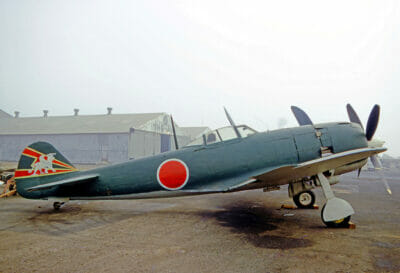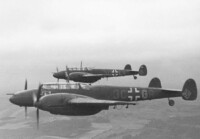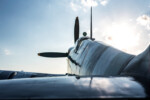The Best Japanese Fighter Planes of WW2
13 June 2022 | Updated on February 05, 2024
Japanese fighter planes of World War 2 rarely get the same level of respect and acclaim accorded to the Allied fighter aircraft of the same era, despite being among the best military aircraft of the war. World War II Japanese combat aircraft like the Mitsubishi A6M Zero and the Nakajima Ki-84 are highly maneuverable, high-performance aircraft with heavy firepower and exceptional range. Flown by the brave and skilled pilots of the Imperial Japanese Army Air Service and the Japanese Navy Air Service, these planes struck terror into the hearts of Allied airmen. They won several air battles over the Pacific and Asia.
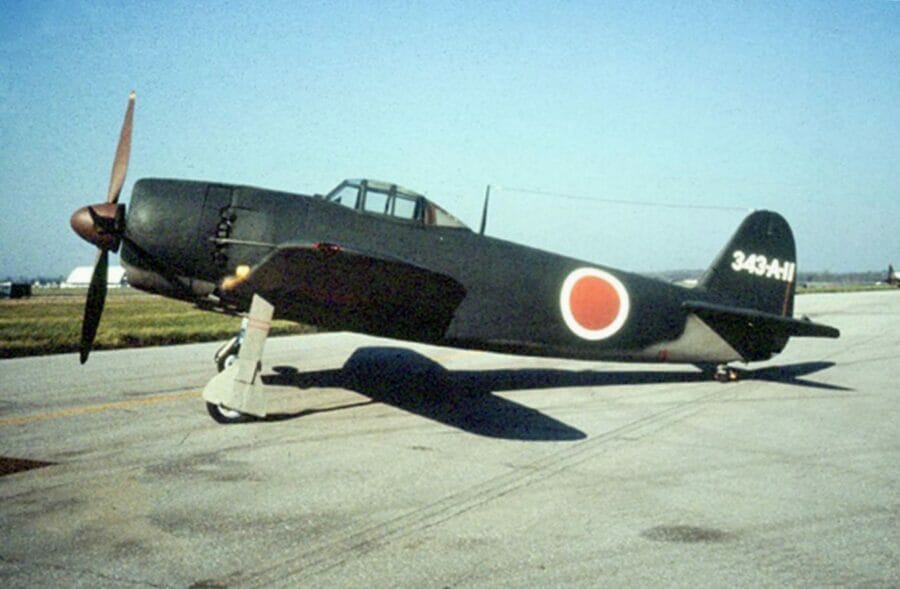


The heated debate over whether Japanese fighter planes were technically superior to American WW2 fighter Jets is missing the point. However, the Japanese fighter planes had exceptional handling and range over American-built combat aircraft between early 1942 – 1943. Improvements made by both countries to their fighter planes throughout the war ensured that American and Japanese fighter planes had similar levels of performance and weaponry by the end of World War 2.
Although the lore of World War 2 aerial battles often focuses on American, German, and British fighter planes, we believe that Japanese fighter planes deserve more than just a mention. And it is why we have compiled a list of the nine best Japanese fighter planes of World War 2.
The 9 Best Japanese Fighter Planes of WW2
1. Nakajima Ki-27


- Manufacturer – Nakajima Aircraft Company
- Introduction – 1937
- Role – Fighter aircraft
- Configuration – Single engine, One seat
- Engine – 1 x Nakajima Ha-1 kotobuki Otsu (Ha-1b) 9-cylinder air-cooled radial piston engine, 710 hp (582 kW)
- Speed – 470 kph (290 mph, 250 kn)
- Range – 627 km (390 mi, 339 nmi)
- No Built – 3,368
The Nakajima Ki-27 is a low-wing monoplane Japanese fighter plane operated by the Imperial Japanese Army Air Force. It featured a closed cockpit and fixed landing gear with excellent turning ability and low wing loading, which gave it a superior edge in dogfights with Allied aircraft during early World War 2. The Ki-27 fighter plane weaponry consisted of two 7.7 mm (.303 in) Type 89 machine guns but lacked armor protection for pilots and self-sealing tanks or fire-suppression fuel tank systems like most Japanese fighter planes of the era.
As the Imperial Japanese Army Air Force’s primary fighter until the start of WW2, The Nakajima Ki-27 saw extensive service in the Asian-Pacific War theaters. These include Northern China, Mongolia, and Southeast Asia before being outclassed by superior fighter planes like Soviet-made Polikarpov I-16 fighters, American Brewster F2A Buffalo, and Curtiss P-40 Warhawks. The Ki-27 front line service ended when the Imperial Japanese Army Air Force adopted the more modern Nakajima Ki-43 as its primary fighter. Surviving Ki-27 fighters were used as trainer aircraft and for kamikaze attacks in the war’s final months. Other wartime operators of the Ki-27 include the Manchukuo Air Force, The Royal Thai Air Force, and the Reformed Government of the Republic of China.
2. Mitsubishi A6M “Zero”
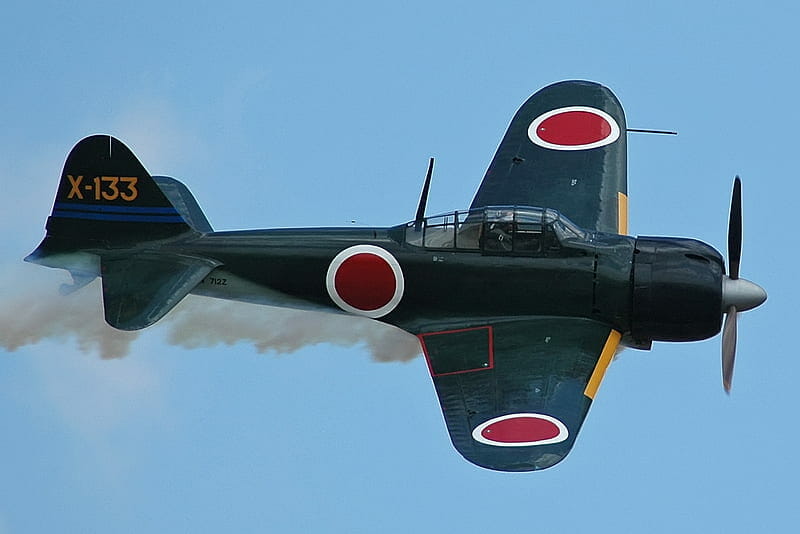

- Manufacturer – Mitsubishi Aircraft Company
- Introduction – 1940
- Role – Carrier-based fighter aircraft
- Configuration – Single-engine, one seat
- Engine – 1 x Nakajima NK1C Sakae-12 14-cylinder air-cooled radial piston engine 940 hp (700kW)
- Speed – 533 kph (331 mph, 288 kn)
- Service Ceiling – 10,000 m (33,000 ft)
- Range – 1,870 km (1,160 mi, 1,010 nmi)
- No Built – 10,939
The fearsome Mitsubishi A6M “Zero” is a carrier-based fighter plane operated by the Japanese Imperial Navy Air Service. Designed and built by the Mitsubishi Aircraft Company, it was one of the most famous Japanese fighter planes of World War 2. The Zero was conceived for long-range missions from aircraft carriers, and it was the most capable Navy fighter plane of the Second World war and was capable of operating from land bases.
Allied pilots developed a healthy respect for the Mitsubishi Zero early in the war because the Zero was superior to any US fighter plane at the time. And with a kill ratio of 12:1, engaging a squadron of Zeros resulted in certain doom for Allied fighter formations. New dogfighting tactics were developed, allowing Allied pilots a chance to shoot down Mitsubishi Zeros. However, the lack of improvements to the Zero during the war meant newer P-51 Mustangs outclassed it before the end of 1943.
3. Kawasaki Ki-61


- Manufacturer – Nakajima Aircraft Company
- Kawasaki Kōkūki Kōgyō K.K.
- Introduction – 1941
- Role – Fighter aircraft
- Configuration – Single-engine, single-seat
- Engine – 1 x Kawasaki Ha40 liquid-cooled V-12 piston engine, 1,159 hp (864 kW) Service Ceiling – 11,600 m (38,100 ft)
- Range – 580 km (360 mi, 310 nmi)
- No Built – 3,078
The Kawasaki Ki-61 is one of the Japanese fighter planes of World War 2 with multi-role functions. Kawasaki engineers developed the aircraft as a high-speed interceptor and low to medium-altitude air superiority fighter for the Imperial Japanese Army Air Force. The Kawasaki Ki-61 features an all-metal alloy semi-monocoque fuselage design and a cockpit canopy with fabric surfaced wing and tail controls. Its safety features include a 13 mm (0.51 in) armor plate fitted behind the pilot, a pair of 50 gallons (190 liters) semi-self sealing fuel tanks inside the wings, and an aft-located self-sealing fuel tank.
Firepower on the Kawasaki Ki-61 is limited to a pair of 20 mm Ho-5 cannons and two rapid firing 12.7 mm Ho-103 machine guns. Prototypes engaged US B-25B Mitchells during the Doolittle Raid over mainland Japan. Production Ki-61 fighter plane squadrons targeted American bomber aircraft in highly successful missions, and they were renowned for their deadly ramming attacks against the B-29 Superfortress at high altitudes.
4. Nakajima Ki-43 Hayabusa
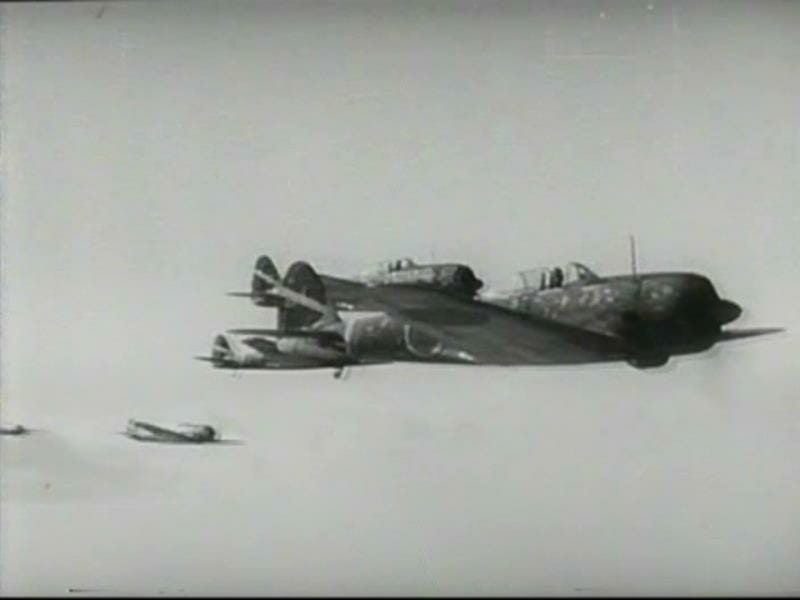

- Manufacturer – Nakajima Aircraft Company
- Introduction – 1941
- Role – Fighter aircraft
- Configuration – Single engine, One seat
- Engine – 1 x Nakajima Ha-115 14-cylinder air-cooled radial piston engine, 1,100 hp (820kW)
- Speed – 530 kph (330 mph)
- Service Ceiling – 11,200 m (36,700 ft)
- Range – 1,760 km (1090 mi, 950 nmi)
- No Built – 5,919
The single-engine Nakajima Ki-43 Hayabusa is a light Japanese fighter plane widely used as a tactical fighter for land-based operations by the Imperial Japanese Army Air Force in early World War II. It was an exceptional combat aircraft with agile handling, lightweight construction, and a powerful Oscar engine that allowed it to dominate the skies over Asian and Pacific Theaters during the early years of the war. However, the Ki-43 Hayabusa’s thin sheet metal, non-sealing tanks, and lack of adequate protective armor sealed its fate against the more armored American aircraft with heavy firepowers like the Lockheed P-38 Lightning and the P-51 Mustang.
The standard weaponry on the Ki-43 Hayabusa includes a pair of cowling-mounted synchronized 7,7 mm and 12.7 Ho-103 machine guns. Although the aircraft has a similar engine and design features to the legendary Mitsubishi A6M Zero fighter plane, it was a devastating Japanese fighter plane of World War 2 in its own right. Several Ki-43 Hayabusa flown by inexperienced pilots were used in Kamikaze (suicide) missions against the US fleet, sinking several ships and killing thousands of American sailors. Other wartime operators of the Nakajima Ki-43 Hayabusa include the Manchukuo Air Force and the Royal Thai Air Force.
5. Kawanishi N1K2-J Shiden-KAI



- Manufacturer – Kawanishi Aircraft Company
- Introduction – 1942
- Role – Fighter
- Configuration – Single engine, One seat
- Engine – 1 x Nakajima NK9H Homare 21 18-cylinder air-cooled radial piston engine, 1,975 hp (1,473 kW)
- Speed – 656 kph (408 mph)
- Service Ceiling – 12,009 m (39,400 ft)
- Range – 1,078 km (670 mi/582 nmi)
- No Built – 415
The Kawanishi N1K2-J Shiden-KAI is a low-wing single-engine Japanese fighter plane of WW2 that started life as the N1K1-J fighter plane, a single pontoon fighter for sea-based offensive air attacks. However, the growing need for capable land-based Japanese fighter planes resulted in Kawanishi engineers upgrading the N1K1-J into the lighter and faster N1K2-J Shiden-KAI fighter. The new fighter features a longer fuselage, redesigned wings, tail, and landing gear, including the innovative automatic combat flaps pioneered on the N1K1-J aircraft.
The N1K2-J shared a third of its components with its predecessor despite having better handling and overall performance. It is highly maneuverable with an 82°/sec at 386 km/h (240 mph) roll rate, which is superior to American F6F Hellcats, F4U Corsairs, and P51 Mustangs, giving it a formidable edge in aerial dogfights against American fighter planes. Primary armaments fitted to the N1K2-J fighter plane include a pair of Type-99 Model 20mm cannons mounted on each wing. The N1K2-J has several safety features, including bullet-proof cockpit glass for pilot protection and self-sealing tanks.
The intensive B-29 bombing of Japanese industrial facilities severely disrupted the production of the NiK2-J Shiden-KAI, and the aircraft never managed to enter the war in sufficient numbers to impact the war’s outcome significantly.
6. Mitsubishi J2M
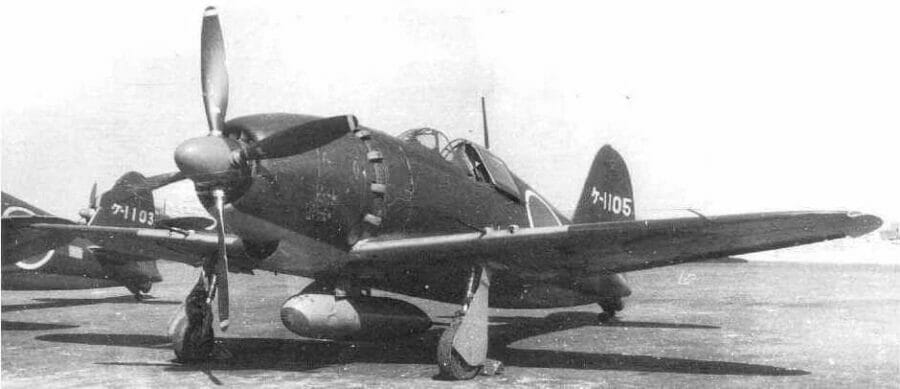

- Manufacturer – Mitsubishi Heavy Industries
- Introduction – 1942
- Role – Fighter aircraft
- Configuration – Single engine, One seat
- Engine – 1 x Mitsubishi MK4R-A Kasei 23a 14-cylinder air-cooled radial piston engine, 1,800 hp (1,300 kW)
- Speed – 587 kph (365 mph, 317 kn)
- Service Ceiling – 11,700 m (38,400 ft)
- Range – 1,898 km (1,179 mi, 1,025 nmi)
- No Built – 621
Realizing the need for a fast interceptor to counter the threat of high-altitude, long-range American B-29 Superfortress bombers. The Imperial Japanese Navy Commissioned Jiro Horikoshi, the brains behind the legendary Mitsubishi “Zero” fighter, to design a fast new Japanese fighter plane with impressive climb speeds and heavy firepower. The outcome was the stubby-looking Mitsubishi J2M fighter plane capable of speeds above 350 miles per hour at 9.100 m (29,900 ft) when powered by its mammoth 1,800 bhp Mitsubishi Kasei engine.
Its primary armament consists of four upward-facing, oblique-firing 20 mm (0.787 in) Type 99 Mark 2 machine guns mounted aft of the cockpit and four wing-mounted Type 99 Mark 1 machine guns providing effective firepower. The J2M was limited to land-based operations and saw action during the Battle of the Philippine Sea and other combat deployments, including Korea against Soviet Union Naval fighter planes. It was one of the last Japanese fighter planes of World War 2 to engage enemy aircraft in aerial combat when four Mitsubishi J2M and eight A6M Zeros shot down four Us Navy F6F Hellcats from the US Navy aircraft carrier USS Yorktown (CV-10), a few hours before the official Japanese surrender announcement.
7. Nakajima J1N1 Gekko
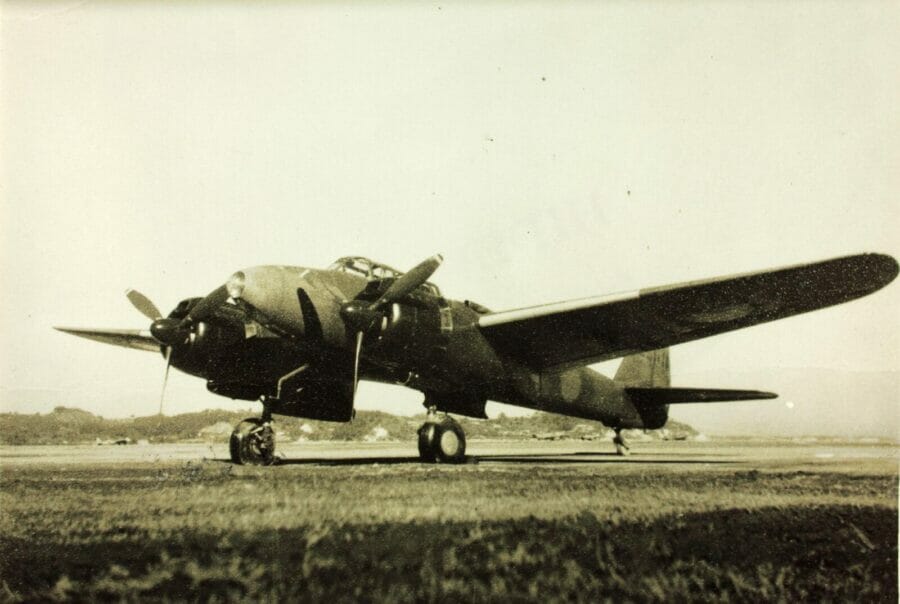

- Manufacturer – Nakajima Aircraft Company
- Introduction – 1942
- Role – Fighter aircraft
- Configuration – Twin-engine, Two seats
- Engine – 2 x Nakajima NK1F Sakae 21 14-cylinder air-cooled radial piston engine, 1,130 hp (840 kW)
- Speed – 507 kph (315 mph, 274 kn)
- Range – 2,545 km (1,581 mi, 1,374 nmi)
- No Built – 479
This fearsome twin-engine night fighter and reconnaissance aircraft rank among the best Japanese fighter planes of WW2. The Imperial Japanese Navy conceived the Nakajima J1N1 Gekko as a long-range escort fighter for the Mitsubishi G3M Nell Bomber. However, its cumbersome handling made the bomber escort idea impractical, and the Navy converted production J1N1 planes into “Gekko” night fighters.
The J1N1 Gekko had tremendous success as a night fighter, downing two American B-17 bombers during its initial trials in May 1943. Its deadly reputation as an effective night fighter comes from four fuselage-mounted 20 mm Type 99 cannons with two 30o upward angle firing guns and two guns firing downward at a 30o forward angle. This lethal setup allows the J1N1 Gekko to attack enemy bombers flying above and below at the same time. Lack of radar and a supercharged high-altitude engine prevented the Nakajima JiN1 Gekko from reaching its full potential during World War 2.
8. Nakajima Ki-84 Hayate
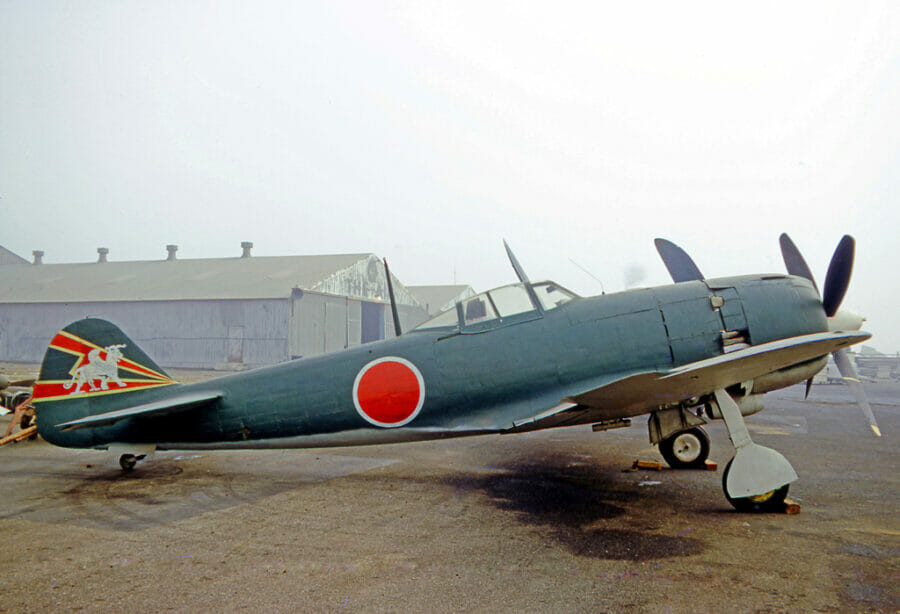

- Manufacturer – Nakajima Aircraft Company
- Introduction – 1944
- Role – Fighter
- Configuration – Single-engine, One seat
- Engine – 1 x Nakajima Homare Model Ha-45-21 (including Models 11, 12, 21,23, or 25) 18-cylinder air-cooled radial piston engine, 2,041 hp (1,522 kW)
- Service Ceiling – 11,826 m (38,799 ft)
- Range – 2,168 km (1,347 mi, 1,171 nmi)
- No Built – 3,514
The Nakajima Ki-84 Hayate is arguably one of the two best Japanese fighter planes of World War 2, the other being the Mitsubishi A6m Zero. It replaced the aging Ki-43 Hayabusa as the Imperial Japanese Army Air Force’s primary fighter plane. The Ki-84 Hayate had an all-metal frame with 13 mm head and back armor, including a 65 mm armored glass canopy for the pilot’s protection. Nakajima engineers installed a fearsome arrangement of lethal weaponry on the Hayate to correct the lackluster firepower of its predecessor, the Ki-43. These include two wing-mounted 20 mm Ho-5 cannons and a pair of 12.7 mm nose-mounted cannons.
The Nakajima K-84 Hayate made its combat debut in November 1944. It quickly proved to be a superior Japanese fighter plane to American P-51 Mustangs and Hellcats in terms of speed and handling and firepower. It could intercept and shoot down B29 Superfortresses, and it was so deadly that American fighter pilots were encouraged not to engage K-84 Hayates in a dogfight. However, the Ki-84 introduction came too late to change the course of the war as intensive Allied bombing destroyed critical fuel supply lines leaving entire Ki-84 squadrons without fuel. Also, experienced Japanese pilots were being killed off faster than new ones could take their place, and inexperienced pilots who flew most sorties in the Ki-84 Hayate had inadequate skills to take advantage of the Hayate’s full potential.
9. Mitsubishi J8M1
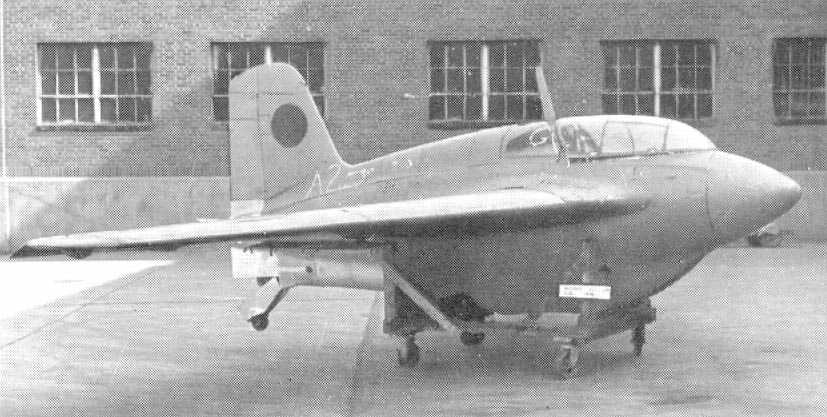

- Manufacturer – Mitsubishi Aircraft Company
- Introduction – 1945
- Role – Interceptor
- Configuration – Single-engine, One seat
- Engine – 1 x One Toku-Ro.2 (KR10) bi-fuel rocket motor, 1,500 kg (3,307 lb)
- Speed – 900 kph (559 mph)
- Service Ceiling – 12,000 m (39,370 ft)
- Range – Up to 7 min of powered flight
- No Built – 7
Although, Germany was the only country to produce significant numbers of jet-powered fighter planes successfully. The Japanese made a limited number of rocket-powered Mitsubishi J8M1 interceptors derived from Luftwaffe’s Messerschmitt Me 163 Komet. After seeing firsthand the devastating effects of the American B-29 strategic bombing on Germany, Japanese authorities arranged to build the J8M1 interceptor and its engine under license from Messerschmitt AG. However, the failure in shipping production examples to Japan from Germany delayed the project, and the aircraft was reverse-engineered from a flight operations manual using local Japanese technology.
A glider version without any engines flew in September 1944 to supply handling data, and a powered prototype first flew in December 1944. The J8M1 had plywood fuselage, tail construction, and jettisoned pilot armor to reduce weight. Its weaponry consists of two 30 mm Type 5 or Ho–105 cannons. The seven operational J8M1 interceptors built did not see any combat action before the war’s end. It was one of the few Japanese fighter planes of World War 2 jointly developed by the Imperial Japanese Army Air Services and the Navy.




















